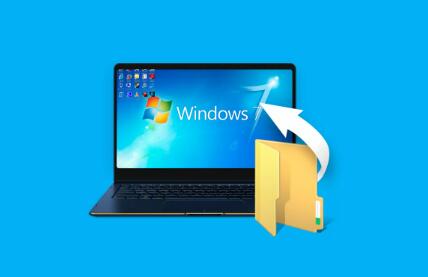System Restore is a feature built into Windows that allows users to revert their system to a previous state, effectively rolling back system files, installed applications, Windows Registry settings, and system settings. However, it’s important to clarify its limitations, particularly regarding deleted files.
What System Restore Does
Restores System Files: System Restore primarily focuses on system files and settings. It can restore core Windows files and drivers to their previous versions, which can be beneficial if a recent change has caused system instability.
Program Settings: It can revert the settings of programs that were modified or installed after the restore point was created. This means if you installed a program and it caused issues, restoring can remove that program.

Registry Changes: System Restore will revert the Windows Registry to the state it was in at the time of the restore point, which can help resolve issues caused by incorrect or corrupt registry entries.
What System Restore Does Not Do
Deleted User Files: System Restore does not recover personal files such as documents, pictures, or videos that have been deleted. If you accidentally delete a file, you would typically need to use file recovery software to attempt to retrieve it.
New Files Created After Restore Point: Any files created after the restore point was established will not be restored. If you saved a document after the last restore point, that document will not be affected by the restoration process.
Non-System Changes: Changes made to non-system settings, applications, or any user files are not reverted. This includes updates to software applications that were installed or modified after the restore point.
How to Use System Restore
If you decide to use System Restore, here’s a simple guide on how to do it:
Open System Restore:
Search for “System Restore” in the Start menu.
Click on “Create a restore point.”
In the System Properties window, click the “System Restore” button.
Choose a Restore Point:
Select a restore point from the list provided. The dates and descriptions can help you choose the appropriate one based on when the issue started.
Confirm Your Selection:
Follow the prompts to confirm the restore point selection. The system may restart during the process.
Wait for Restoration:
The restoration process can take some time. Once completed, your system will restart, and you’ll receive a notification about the success of the operation.
Alternatives for File Recovery
If you’re looking to recover deleted files specifically, here are some alternatives to System Restore:
File History: If you’re using Windows, enable File History to create backups of your files periodically. This feature can help restore previous versions of your files.
Recycle Bin: Always check the Recycle Bin first. Deleted files may still be there unless they’ve been permanently removed.
Backup Solutions: Regular backups to an external drive or cloud storage can provide a reliable way to recover files.
Data Recovery Software:
Panda Assistant is a data recovery software designed to help users retrieve lost or deleted files from various storage devices, including hard drives, SSDs, USB drives, and memory cards. It utilizes advanced algorithms to scan for and recover files that may have been lost due to accidental deletion, formatting, or system crashes.
Key Features:
User-Friendly Interface: Panda Assistant is designed with ease of use in mind. The interface is intuitive, allowing users of all technical skill levels to navigate and utilize its features effectively.
Deep Scanning Technology: The software employs deep scanning capabilities, enabling it to locate files that standard recovery tools might miss. This feature is particularly useful for recovering data after a quick format or when the storage device has been corrupted.
Preview Function: Before finalizing the recovery, users can preview files to ensure they are recovering the correct documents, photos, or videos. This feature helps prevent unnecessary recovery of unwanted files.
Support for Various File Types: Panda Assistant supports a wide range of file formats, including documents, images, videos, audio files, and more. This versatility makes it suitable for various recovery scenarios.
Quick Recovery Options: For users looking to recover recently deleted files, the software offers quick recovery options, allowing for faster scanning and retrieval of recently lost data.
How It Works:
Installation: Users download and install Panda Assistant on their computer.
Scan: The user selects the storage device from which they want to recover files and initiates a scan. The software will search for recoverable data.
Preview & Recover: After the scan, users can preview the found files. They can select the desired files and recover them to a safe location.
While System Restore is a valuable tool for addressing system-level issues, it’s not designed for recovering deleted user files. Understanding its limitations can help you manage your data effectively. Always maintain regular backups of important files and explore file recovery options if you need to restore lost data.
About us and this blog
Panda Assistant is built on the latest data recovery algorithms, ensuring that no file is too damaged, too lost, or too corrupted to be recovered.
Request a free quote
We believe that data recovery shouldn’t be a daunting task. That’s why we’ve designed Panda Assistant to be as easy to use as it is powerful. With a few clicks, you can initiate a scan, preview recoverable files, and restore your data all within a matter of minutes.
Subscribe to our newsletter!
More from our blog
See all postsRecent Posts
- How to recover a deleted slide in powerpoint? 2025-02-27
- How to recover deleted capcut videos? 2025-02-27
- How to recover a file deleted from a shared drive? 2025-02-27










